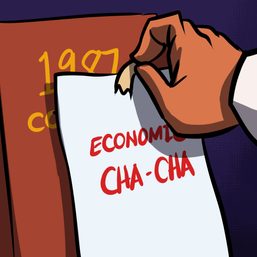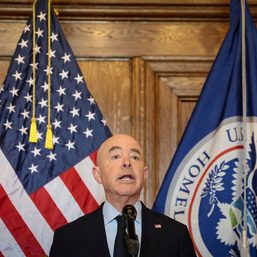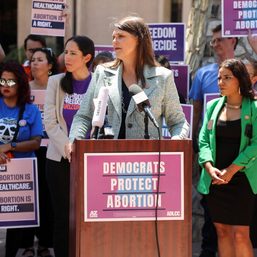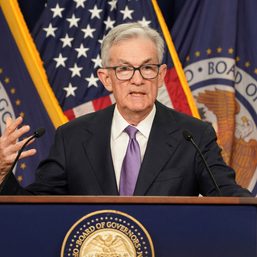SUMMARY
This is AI generated summarization, which may have errors. For context, always refer to the full article.

New applications for jobless benefits returned to a downward path on Thursday, August 6, after two weeks of increases, hitting a new pandemic low in a surprise sign of improvement, but economists warn the battered United States job market recovery remains painfully slow.
Meanwhile, talks in Washington on a new emergency spending plan and expanded unemployment payments continue to drag on with Democratic leaders and President Donald Trump’s economic team still far apart.
Trump announced on Thursday he plans to issue executive action to address some parts of the $2.2-trillion CARES Act approved in late March, including prohibiting evictions of home renters and extra unemployment payments.
“I’ve notified my staff to continue working on an Executive Order with respect to Payroll Tax Cut, Eviction Protections, Unemployment Extensions, and Student Loan Repayment Options,” Trump tweeted.
The sides have spent weeks wrangling over an approximately $1-trillion proposal from the Republican-controlled Senate and a more than $3-billion package put forward by the Democrats in the House of Representatives.
House Speaker Nancy Pelosi told reporters the sides are making progress but cautioned “we’re not there yet.”
She rejected the idea of a short-term extension of the additional federal unemployment benefits which the White House has proposed.
“We have to think big…because this is a big challenge, and it will only get worse,” Pelosi said.
Jobs losses have slowed
Economists warn that the job market may have stalled in July, with the closely-watched government employment report on Friday, August 7, expected to show a far smaller increase than in June.
Workers filing for first-time jobless benefits dropped last week to 1.19 million, well below what analysts had been expecting, and applications for pandemic assistance also fell sharply, the Labor Department reported on Thursday.
But even with the improvement, initial claims have held above one million for 20 consecutive weeks, and the 4-week average was barely changed at 1.33 million in the week ended August 1, the report said.
The data show job losses have continued – but at a slower pace – in recent weeks, as cases of COVID-19 spiked in many states, forcing authorities to reimpose some restrictions, with 6.7 million new claims filed in the month.
Nancy Vanden Houten of Oxford Economics said the end of the additional $600 in weekly federal jobless payments benefits may have discouraged workers from submitting new applications.
“If that’s the case, initial claims would likely bounce back if and when those benefits are renewed,” she said in an analysis.
‘Painfully slow recovery’
The total number of workers continuing to receive jobless benefits fell to 16.1 million in the week ended July 25, nearly 10 times higher than a year earlier, and the insured unemployment rate dipped six-tenths to a still-high 11%.
That “underscores the painfully slow recovery in the labor market,” Vanden Houten said.
When all programs are combined, including pandemic emergency assistance and expanded unemployment benefits, 31.2 million workers were receiving help through the week ended July 18 – compared to just 1.7 million a year earlier.
“Repeated shutdowns for virus containment remain a threat to the labor market, which is already weak. The possibility of mounting layoffs that could become permanent is high,” Rubeela Farooqi of High Frequency Economics said in an analysis.
“Overall, without effective virus containment the recovery remains at risk from ongoing job losses that could further restrain incomes and spending.”
And even the good news in the report is not as good as it appears, economist Joel Naroff said, noting that the latest week does not include the states where workers continuing to receive benefits file biweekly.
Although further widespread shutdowns appear unlikely, with layoffs from the second virus wave falling, “the clear slowdown in the rate of decline over the past few weeks is ominous,” Naroff said. – Rappler.com
Add a comment
How does this make you feel?


![[Time Trowel] Evolution and the sneakiness of COVID](https://www.rappler.com/tachyon/2024/02/tl-evolution-covid.jpg?resize=257%2C257&crop=455px%2C0px%2C1080px%2C1080px)

















There are no comments yet. Add your comment to start the conversation.